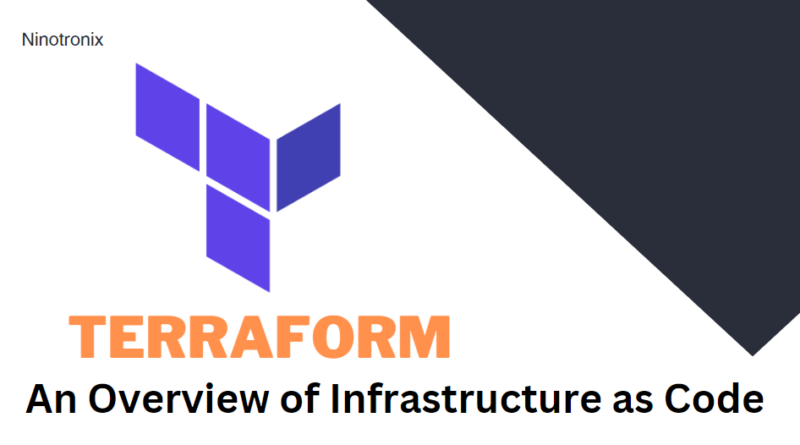Introduction to Terraform: An Overview of Infrastructure as Code
Terraform is a popular tool for Infrastructure as Code (IAC), allowing you to manage your infrastructure in a declarative way, using a simple language to define and automate the creation, modification, and destruction of resources across multiple cloud providers and services.
In the past, infrastructure was managed manually, with system administrators performing tasks like provisioning servers and configuring networks through a series of manual steps. However, as organizations started to rely more on cloud services and dynamic infrastructure, this approach became unmanageable and error-prone. Infrastructure as Code emerged as a solution to this problem, allowing administrators to automate infrastructure management using code.
Terraform was developed by HashiCorp, a company known for creating popular DevOps tools like Vagrant and Consul. It supports a wide range of cloud providers, including Amazon Web Services (AWS), Google Cloud Platform (GCP), Microsoft Azure, and more. Terraform works by using a domain-specific language (DSL) called HashiCorp Configuration Language (HCL) to define your infrastructure as a set of resources and dependencies.
With Terraform, you define your infrastructure in a configuration file, which can be version controlled and managed just like any other codebase. This file specifies the desired state of your infrastructure, including resources like servers, load balancers, and databases, as well as their dependencies and relationships. Terraform then uses this configuration to create, modify, or destroy resources as needed, ensuring that your infrastructure is always in the desired state.
One of the key advantages of Terraform is its ability to support infrastructure across multiple cloud providers. This means that you can use the same configuration file to manage resources on AWS, GCP, and Azure, for example, making it easier to manage hybrid cloud environments. Terraform also allows you to use a wide range of third-party modules and plugins to extend its functionality and integrate with other tools and services.
Another important feature of Terraform is its support for state management. When you run a Terraform configuration, it creates a state file that tracks the current state of your infrastructure. This file includes information about the resources that Terraform has created, their current state, and any dependencies or relationships between them. This state file is used by Terraform to track changes to your infrastructure over time, ensuring that your infrastructure remains consistent and predictable.
Terraform also provides a number of features that help ensure the reliability and consistency of your infrastructure. For example, it supports versioning of configuration files and state files, allowing you to roll back changes and track changes over time. It also provides a preview feature that allows you to see the changes that Terraform will make before actually making them, giving you a chance to review and approve changes before they are applied.
In summary, Terraform is a powerful tool for managing infrastructure as code. By defining your infrastructure in code, you can automate the creation, modification, and destruction of resources across multiple cloud providers and services, making it easier to manage complex and dynamic infrastructure. With features like state management, versioning, and preview, Terraform helps ensure the reliability and consistency of your infrastructure over time, making it a valuable tool for DevOps teams and infrastructure engineers.
Unleashing the Power of Infrastructure as Code: 5 Key Benefits of Terraform
Infrastructure as Code (IAC) has revolutionized the way modern organizations manage their infrastructure. Rather than relying on manual processes to manage servers, networks, and other resources, IAC uses code to automate infrastructure management, making it faster, more reliable, and more scalable. Terraform is one of the most popular tools for IAC, offering a wide range of benefits to DevOps teams and infrastructure engineers. Here are five key benefits of using Terraform for infrastructure management:
- Consistent Infrastructure
One of the biggest benefits of Terraform is that it provides a consistent way to manage infrastructure across multiple cloud providers and services. By defining your infrastructure as code, you can create a reusable blueprint that describes how your infrastructure should be configured, regardless of the underlying technology. This allows you to ensure that your infrastructure is consistent and predictable, regardless of where it is running.
Terraform also provides a state management feature that allows you to track changes to your infrastructure over time. This means that you can easily roll back changes, or even recreate your infrastructure from scratch if necessary. This makes it easier to manage complex, multi-tiered applications, as well as hybrid cloud environments that span multiple cloud providers.
- Faster Infrastructure Deployment
Another benefit of Terraform is that it allows you to deploy infrastructure faster than with traditional manual methods. With Terraform, you can automate the creation, modification, and destruction of resources across multiple cloud providers and services, reducing the time it takes to deploy new infrastructure. This can be particularly valuable for teams that need to deploy infrastructure quickly, such as during peak traffic periods or when rolling out new features.
Terraform also provides a preview feature that allows you to see the changes that will be made before they are applied. This makes it easier to catch errors and ensure that your infrastructure changes are correct before they are deployed.
- Scalable Infrastructure
Terraform allows you to manage infrastructure at scale, making it easier to manage large, complex environments. With Terraform, you can define your infrastructure as a set of reusable modules, which can be used across multiple projects and environments. This allows you to scale your infrastructure up or down as needed, depending on your business needs.
Terraform also supports a wide range of cloud providers and services, allowing you to manage infrastructure across multiple environments. This makes it easier to manage hybrid cloud environments that include both on-premises and cloud-based resources, as well as multi-cloud environments that span multiple cloud providers.
- Improved Collaboration
Terraform supports collaboration between team members, making it easier to manage infrastructure changes across multiple teams and projects. With Terraform, you can store your infrastructure code in version control, such as Git, allowing team members to collaborate on infrastructure changes just as they would on code changes. This allows teams to work together more efficiently and effectively, reducing the risk of errors and improving the overall quality of infrastructure management.
Terraform also supports a wide range of third-party modules and plugins, making it easier to integrate with other DevOps tools and services. This allows teams to use their preferred tools and services, while still leveraging the power of Terraform for infrastructure management.
- Cost Savings
Finally, Terraform can help organizations save money by optimizing infrastructure usage and reducing waste. With Terraform, you can automate the creation, modification, and destruction of resources, allowing you to scale infrastructure up or down as needed. This means that you can reduce the number of unused resources, such as idle servers or unused storage, saving money on infrastructure costs.
Terraform also provides a wide range of resource optimization features, such as automatic backups, resource tagging, and resource monitoring. This allows you to optimize your infrastructure usage, reducing the risk of overprovisioning and wasted resources.




